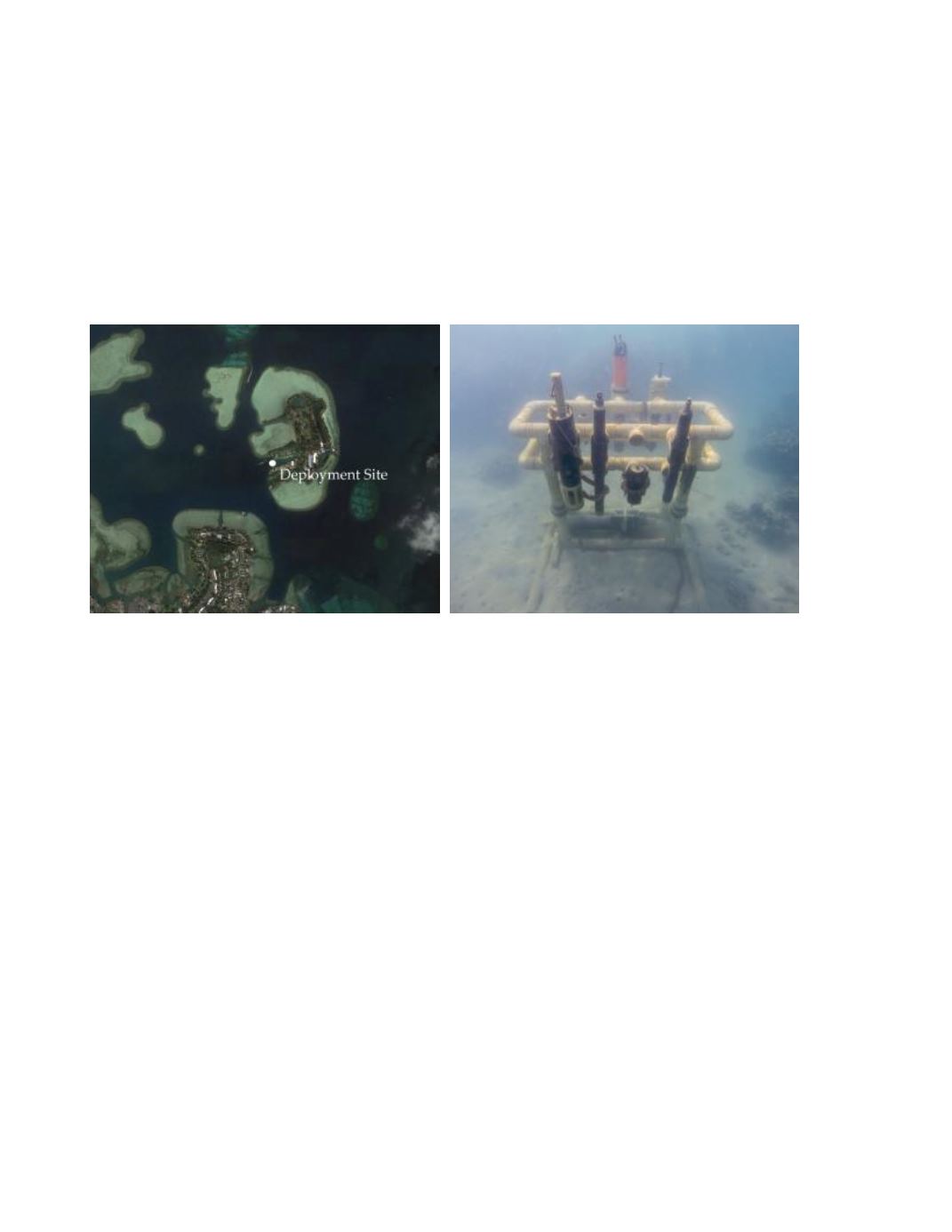

Ref. No. [UMCES] CBL 2016-010
ACT VS16-01
53
Moored Deployment off Coconut Island in Kaneohe Bay, Hawaii
An 18 week long moored field test was conducted in Kaneohe Bay from September 22, 2015 to
January 20, 2016. The deployment site was located at 21.43° N x 157.79° W, on the fringing reef flat
surrounding Coconut Island (HIMB) in a depth of 3 meters (Photo 5). Kaneohe Bay, located on the
eastern side of Oahu, Hawaii, is a complex estuarine system with a large barrier coral reef, numerous
patch reefs, fringing reefs, and several riverine inputs. Tides in Kaneohe Bay are semi-diurnal with
mean tidal amplitude of approximately 68 cm day.
Photo 5.
Aerial view of HIMB deployment site (left) and instrument rack in-situ (right).
Time series results of ambient conditions for tidal height, temperature, and salinity are given in
figure 7. Temperature at the sensor level ranged from 23.1 to 29.1 °C and salinity from 27.3 to 34.7
over the duration of the field test. The bottom panel displays the maximum difference recorded
between all reference thermistors mounted at the same depth but located across the mooring rack. The
average temperature difference observed across the space of the mooring rack was 0.15 ±0.17
o
C, with
a maximum of 1.23
o
C. Differences between instrument and reference readings resulting from this
variability should be minimized as the sampling bottle integrates across the mooring space.
The AroW-USB reported data throughout the entire deployment and generated 5653
observations based on its 30 minute sampling interval, but 785 observations fell outside of a natural
ambient range (denoted by values more than ± 2 mg/L than the nearest reference sample) and were
excluded from comparison against reference samples. The data completion result based on this
accepted subset of data was 86%. Time series results of the AroW-USB and corresponding reference
DO results are given in figure 8. Ambient DO measured by the AroW-USB ranged from 2.329 to
10.996 mg/L compared to the range captured by the reference measurements of 3.630 to 9.851 mg/L.
The average and standard deviation of the differences between instrument and reference readings
(limited to ± 2.0mg/L DO; n=75 of 129 potential observations) were 0.367 ± .637 mg/L, with a total
range in the differences of -0.720 to 1.991 mg/L. The drift rate of instrument offset for the accepted
subset of data, estimated by linear regression (r
2
=0.74), was 0.165 mg/L/d. This rate would include
any biofouling effects as well as any electronic or calibration drift.
















